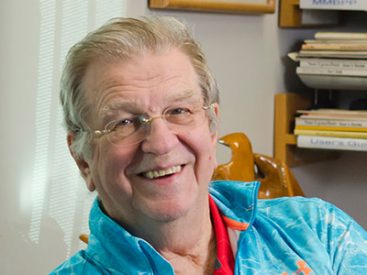
Anthony J. Sinskey
1940-2025
Over the course of his research career, Anthony Sinskey published more than 350 papers in leading peer-reviewed journals for biology, metabolic engineering, and biopolymer engineering, filed more than 50 patents, and contributed to the founding of multiple companies. He was also the co-founder and faculty director of the Center for Biomedical Innovation (CBI). He leveraged an interdisciplinary approach to metabolic engineering, focusing on the fundamental physiology, biochemistry, and molecular genetics in bacteria and plants to determine key factors that regulate the synthesis of different biomolecules.
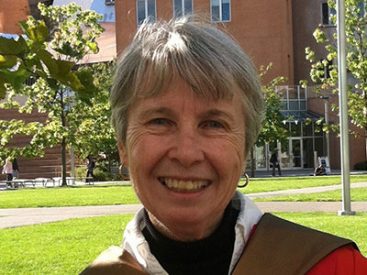
Mary-Lou Pardue
1933-2024
Known for her rigorous approach to science and pioneering research, Pardue paved the way for women scientists at MIT and beyond, known for her rigorous approach to science as well as her bright smile and support of others. Pardue studied the ends of chromosomes — complex, dynamic nucleoprotein structures formed on long arrays of repeated DNA sequences, known as telomeres. In 1983, Pardue was the first woman in the School of Science at MIT to be inducted into the National Academy of Sciences. As one of the senior women faculty who co-signed a letter to the Dean of Science at MIT about the bias against women scientists at the institute, Pardue’s career was inextricably linked to the slowly rising number of women with advanced degrees in science.

Sheldon Penman
1930–2021
Sheldon Penman’s work spanned the intersection of biochemistry and structural biophysics. He revealed the organization and assembly of regulatory complexes in nuclear microenvironments; studied compartmentalization in the cytoplasm and rRNA biosynthesis; and uncovered RNA’s role in the architectural organization of transcriptional regulatory machinery and of nuclear structure and function. He was an exceptional mentor, and many of his students have gone on to make pivotal contributions in science.

Angelika Amon
1967-2020
A professor and mentor at MIT for over 20 years, Amon performed pioneering research on aneuploidy — what happens when a cell has the wrong number of chromosomes. She made profound contributions to our understanding of the fundamental biology of the cell, deciphering the regulatory networks that govern cell division and proliferation in yeast, mice, and mammalian organoids, and shedding light on the causes of chromosome mis-segregation and its consequences for human diseases.
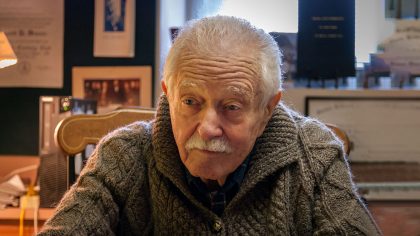
Arnold Demain
1927-2020
Demain advanced the field of fermentation biology, and made major contributions to the study of antibiotics such as penicillin, cephalosporin, and beta-lactam. He discovered the enzyme deacetoxycephalosporin C synthase, which transforms penicillins into cephalosporins. Later in his career, he examined Clostridium tetani and Clostridium difficile bacteria in hopes of devising tetanus and antibiotic-associated diarrhea vaccines. He ultimately authored more than 500 publications and 21 patents.
Photo credit: Steven Brener
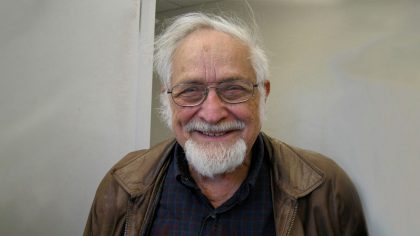
Maurice Fox
1924-2020 ● Department Head 1985-1989
Fox was instrumental in creating and revising several courses within the biology major at MIT, and cared deeply about the scientific enterprise and bioethics. As a bacterial geneticist, he used bacterial transformation as an experimental model for genetic analysis to gain insights into mechanisms of genetic modification. He later extended his investigations to transduction and conjugation, and helped lay the foundation of our modern understanding of DNA mutation, recombination, and mismatch repair.

Irving London
1918-2018
London was the first professor to hold dual roles at Harvard and MIT, and was the founding director of the Harvard-MIT Program in Health Sciences and Technology. He received numerous awards for his groundbreaking work deciphering the molecular regulation of hemoglobin synthesis at the level of transcription and translation. He and his colleagues demonstrated that hemoglobin is the endogenous source of the yellowish pigment bilirubin, which provided key insights into jaundice and heme oxygenase research.
Photo credit: courtesy of the Institute for Medical Engineering and Science

Gene Brown
1926-2017 ● Department Head 1977-1985
Brown was a devoted mentor and research advisor. A pioneer in the field of intermediary metabolism, he was legendary for teaching intermediary metabolism without any notes. He studied how living systems carry out chemical reactions in order to survive, primarily focusing on the enzymatic synthesis of several B vitamins. He is best known for his work on the biosynthesis of folic acid and related compounds both in microorganisms and in the fruit fly Drosophila melanogaster, publishing over 100 research papers in his career.
Photo credit: Donna Coveney
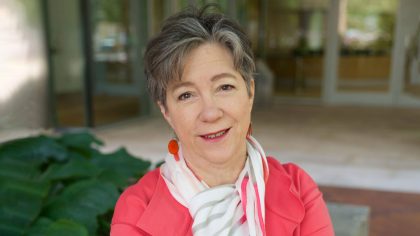
Susan Lindquist
1949-2016 ● National Medal of Science 2009
Lindquist was the director of Whitehead Institute from 2001-2004, and made invaluable contributions to the study of protein folding — demonstrating that alternative protein conformations can have profound and unexpected effects. She is best known for her work on prions: proteins that exhibit an unusual ability to exist in multiple stable structural states, with altered functions depending on the state. Her research transformed budding yeast into a model organism for studying human disease, evolution, and biomaterials.
Photo credit: Ceal Capistrano/Whitehead Institute

Alexander Rich
1924-2015
Rich made major contributions to understanding the relationships between the structure and function of RNA and DNA, and in doing so mentored generations of students. He led a team of MIT researchers to discover a “left-handed” form of DNA called Z-DNA — and revealed that single-stranded nucleic acid molecules could combine to form double and triple helices. He also found that an RNA strand and a DNA strand could come together to form a double helix, helping to explain how cells transcribe DNA into mRNA.
Photo credit: Donna Coveney
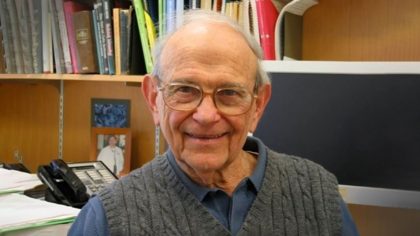
Herman Eisen
1918-2014
Eisen was a pioneering immunologist and founding member of the MIT Center for Cancer Research. Much of his work focused on studying myeloma tumors in mice and screening their associated proteins. He also studied how CD8 T cells develop into cytotoxic “killer” T cells and long-lived memory T cells. In doing so, he was working to overcome the barriers to creating effective CD8 vaccines, and his research on the subject made important contributions that helped to advance the field of cancer immunology.
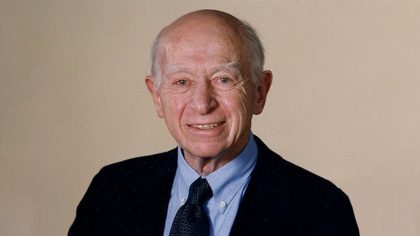
Boris Magasanik
1919-2014 ● Department Head 1967-1977
Magasanik pioneered the study of gene regulation, and helped establish MIT Biology as a center of excellence for education. He investigated how microbial cells alter expression of metabolic enzymes in response to nutrients. He was the first to demonstrate nitrogen regulation, leading him to make fundamental discoveries in bacterial gene regulation — identifying a special form of RNA polymerase for transcribing nitrogen-regulated genes, and delineating conserved intracellular signaling circuits.
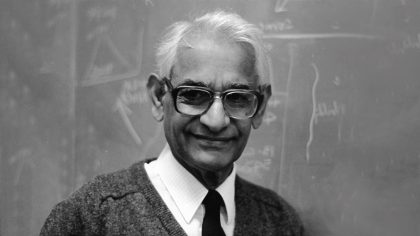
H. Gobind Khorana
1922-2011 ● Nobel Laureate 1968
Khorana devoted much of his scientific career to unraveling the genetic code. He earned a Nobel Prize in 1968 for determining the mechanisms by which RNA codes for the synthesis of proteins — and also became interested in replicating the process synthetically. In 1970 he joined MIT, where he continued to work at the forefront of the growing field of genetics. He also investigated biomembranes and rhodopsins, the pigments on the retina that are responsible for the first step in the biological perception of light.
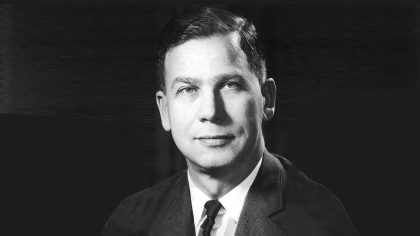
John M. “Jack” Buchanan
1917–2007
Buchanan was a dedicated researcher, and his work on purine biosynthesis spurred the development of many chemotherapy anticancer drugs that have been widely used for decades. His lab at MIT built on his early purine work to explore the biosynthesis of the methyl group of methionine. His team also investigated nucleotide and nucleic acid synthesis in bacteriophage T4-infected E. coli cells, as well as other facets of nucleotide metabolism.
Photo credit: The Protein Society

Vernon Ingram
1924-2006
Ingram was often called the “father of molecular medicine.” He focused on the genetics of hemoglobin, the molecule that carries oxygen in the blood. Those studies led to his discovery that the misshapen hemoglobin molecules that characterize sickle cell anemia are caused by a single mutation. Later in his career, he delved into neuroscience research, primarily Alzheimer’s disease.
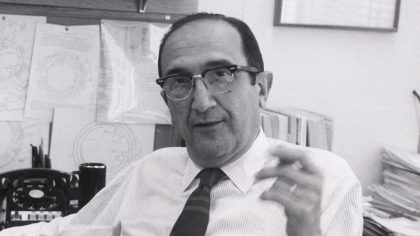
Salvador Luria
1912-1991 ● Nobel Laureate 1969
Luria devoted much of his career to studying bacteriophages — viruses that invade and kill bacteria. In 1969, he shared a Nobel Prize with his colleagues for their insights into the replication mechanism and genetic structure of these viruses. He also was the founding director of the Center for Cancer Research at MIT, where researchers discovered mRNA splicing and isolated oncogenes. During his career, he published over 150 scientific articles, numerous essays and editorials, and four books.
Photo credit: Marc PoKempner, the MIT Museum, and the National Library of Medicine
